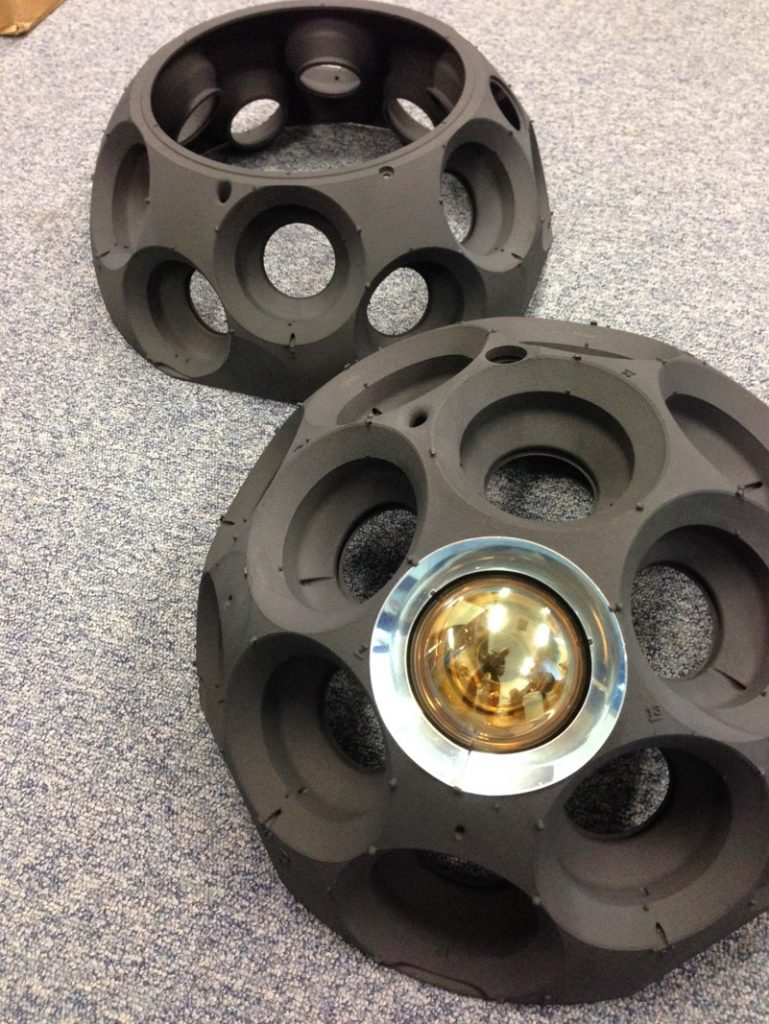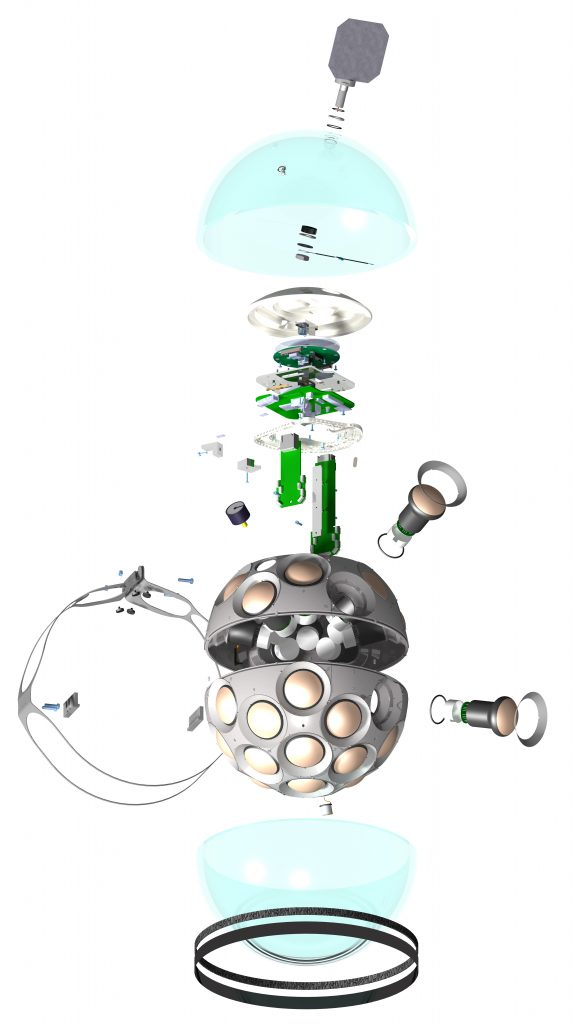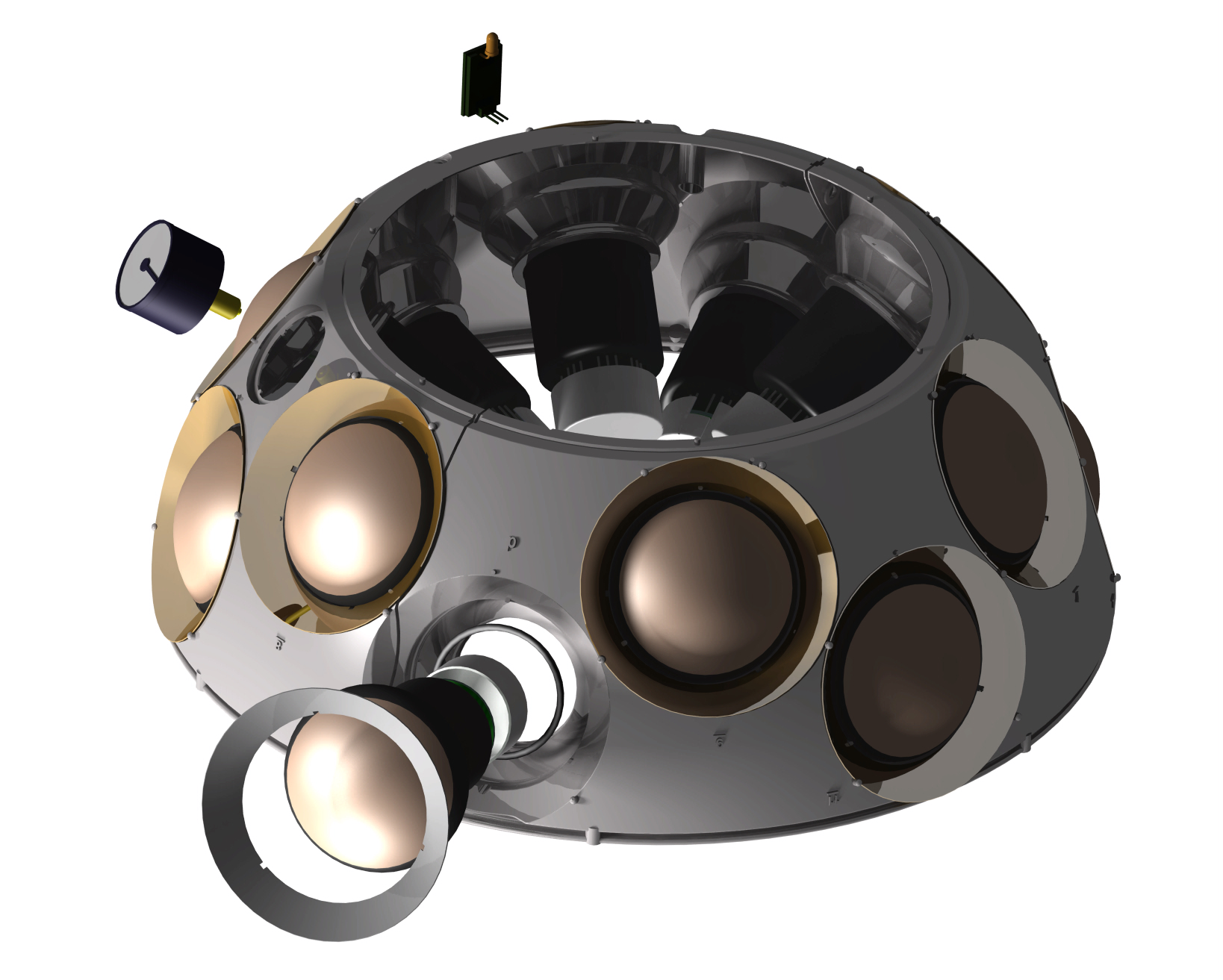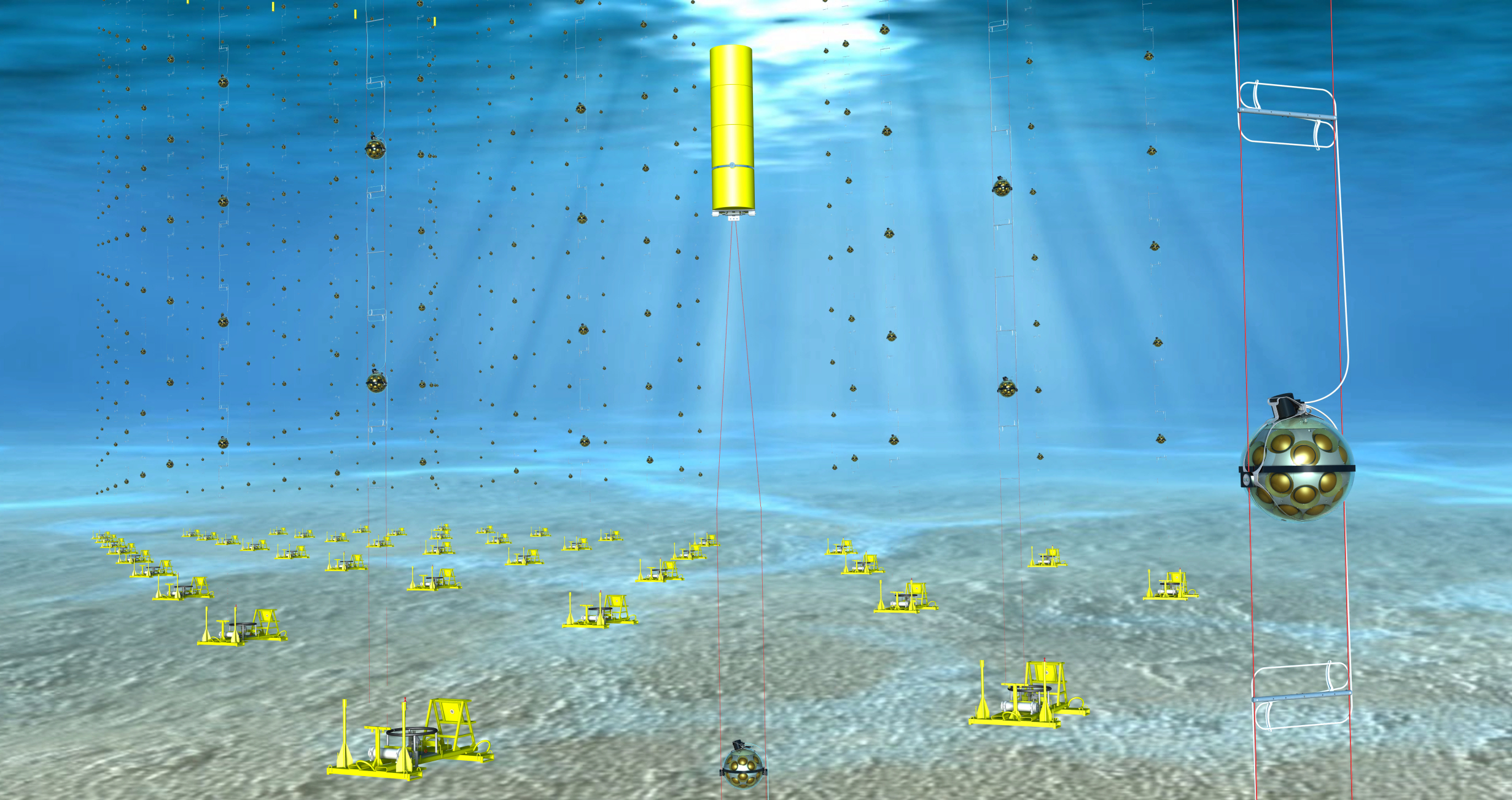An international project carrying out research into the building blocks of our universe is currently underway, and 3D printing is playing an important role in unlocking answers that have so far eluded scientists across the globe.
The Cubic Kilometer Neutrino Telescope (KM3NeT) project has been active for the best part of a decade, seeking to explore the behavior of neutrino particles coming from the universe towards Earth and therefore answer long-standing questions surrounding cosmic rays, particle accelerators, and even black holes.
Now, 3D printing technology is bringing the project to life by helping to create a research infrastructure in the deepest seas of the Mediterranean that will house next-generation neutrino telescopes spanning over one cubic kilometer. Nikhef, the Dutch National Insitute of Subatomic Physics and spearhead of the KM3NeT project, turned to Italian 3D printing and CNC service provider Weerg to provide an essential component for the infrastructure using its fleet of HP Multi Jet Fusion (MJF) 5210 3D printers.
“We have been working on this project since 2013 and over the years we have contacted about 50 different suppliers,” said Edward Berbee of Nikhef. “Initially, the prices of 3D printing were unfeasible, then we found a supplier with reasonable prices, but he was only able to make the component in two divided parts that we had to glue afterward. This solution was certainly not optimal so we continued to analyze new technologies until we discovered the interesting performance of HP’s Multi Jet Fusion Systems.
“While we were considering whether or not a research institution like ours should purchase the system, we read an article announcing Weerg’s record-breaking installation of HP 3D printers. ”

HP MJF 3D printing technology
HP entered the 3D printing sector with its MJF technology towards the end of 2014 and commercialized its first machine less than two years later. Since then, the firm has accelerated the adoption of its MJF technology across the globe and launched its Open Materials platform to speed up the creation and improvement of new materials.
MJF uses an inkjet array to apply fusing and detailing agents across a bed of nylon powder, which is then fused into a solid layer when heat is applied. The process of binding powder delivers greater isotropic material properties, faster build speeds, and manufacturing cost savings. To date, more than 50 million parts have been produced via MJF.
HP launched its line of 5200 MJF 3D printers midway through 2019, designed to target volume production with accuracy and repeatability likened to injection molding. The company also released a new flexible TPU for MJF, confirmed new industrial alliances, and introduced its Digital Manufacturing Network.
More recently at last year’s Formnext Connect, HP announced a three-pillar launch involving a new software solution, the HP Universal Build Manager, which is powered by Seattle-based software company Dyndrite, alongside its new HP 3D Factory Services to aid customers in implementing their production processes, and its HP Automatic Unpacking Station, developed in partnership with Rösler Group’s AM Solutions. The company also revealed it had developed a new printable thermoplastic elastomer for its MJF technology in collaboration with German specialty chemicals firm Evonik.

3D printing digital optical modules for KM3NeT
Neutrinos are one of the most abundant fundamental particles that make up the universe, but they are also one of the least understood. What we do know, is that neutrinos do not carry an electric charge, hence their name, and that their rest mass is so small that it was long thought to be zero. The KM3NeT’s goal is to open up the study of these mystifying particles which could help us to understand where cosmic rays come from and how particle accelerators work in the universe.
To achieve this, the KM3NeT consists of football-sized glass spheres called digital optical modules (DOMs) which are each filled with 31 phototubes. These spheres will be anchored to the sea floor in hundreds of rows stretching around a kilometer in length to enable the phototubes to detect the faint light in the deep sea from charged particles originating from neutrino and Earth collisions. Through this, scientists will be able to search for neutrinos from distant astrophysical sources such as supernovae – powerful and luminous stellar explosions – gamma rays, and colliding stars.
Nikhef employed Weerg’s 3D printing services for the production of an essential component of the DOMs, called semi-spheres, which measure 380 millimeters and are printed using HP MJF 5210 3D printers.
“The first order arrived about two years ago, and since then the collaboration has continued with regularity, even for higher and higher runs,” said Francesco Zanardo, Weerg General Manager. “So far we have produced about 300 of these spheres, which have the particularity of having the maximum size that can be printed with HP systems.”

The spheres are printed in Nylon PA12 due to its rigidity and chemical resistance to oils, greases, and hydrocarbons. The material also absorbs very little humidity to ensure high performance in almost any environmental conditions. Weerg has also 3D printed several smaller, undisclosed components for the project using its HP MJF machines.
Once the KM3NeT project is completed in the next few years, more than 6,000 spheres will have been installed on the seafloor in three locations of the coast of France, Italy, and Greece. Some of Weerg’s 3D printed components are already in position and in use at the site off of Toulon, France, where 108 spheres are currently operational. By April this year, the site near Sicily, Italy, will have 90 units installed.
“We are proud to have been chosen by Nikhef to contribute, albeit in a small way, to the realization of this project,” added Zarnardo. “The value we have been recognized for is related to the fact that we can make these components very easily, uploading the filed online from anywhere in the world and receiving the order in a few days with the same guarantee of compliance and quality throughout Europe.”
The KM3NeT project will be completed off the coast of France in 2024, and off the coast of Italy in 2026. At the France location, the infrastructure will detect low-energy neutrinos generated by cosmic rays interacting with the Earth’s atmosphere, while at the Italy base studies will center on neutrinos resulting from supernovae caused by the final acts of distant stars.

Source: Hayley Everett

Leave A Comment